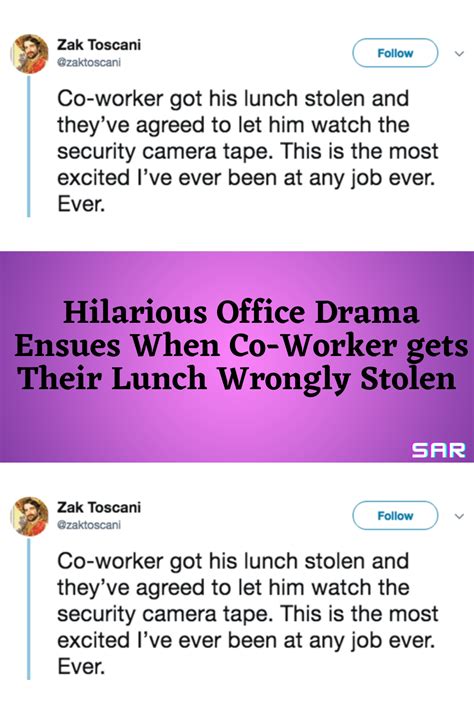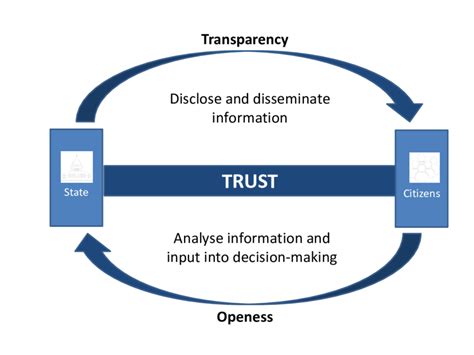
Poverty carries a multitude of often-overlooked expenses beyond the simple lack of income, as highlighted by a recent surge of viral social media stories detailing the frustrating and counterintuitive costs of being poor in America. These narratives expose systemic disadvantages and financial burdens faced by low-income individuals and families, debunking the myth that poverty is solely a matter of insufficient funds.
The viral trend, sparked by online discussions and personal anecdotes, reveals how the poor often pay more for essential services, goods, and opportunities, creating a cycle of financial hardship. This includes higher interest rates on loans, late fees, transportation costs, food deserts, and limited access to quality healthcare, among other factors that exacerbate financial instability.
The phenomenon, described as “poverty tax,” is gaining traction as a crucial talking point in broader conversations about economic inequality, social justice, and systemic barriers impacting vulnerable populations. The experiences shared online illuminate the day-to-day challenges of navigating a system that disproportionately burdens those with the fewest resources.
“People are sharing the frustrating costs of being poor in America,” Yahoo Lifestyle reported, adding that many of the stories reveal systemic issues rather than individual failings.
One particularly poignant example gaining traction online involved a woman detailing how she spent $150 on Uber rides just to get to a job that ultimately paid minimum wage. This illustrates the challenge of transportation costs for low-income individuals who may not have access to reliable vehicles or public transportation in certain areas.
Many shared stories emphasized the difficulty of building any savings due to constant financial emergencies and the high cost of maintaining basic necessities. The accumulation of debt due to late fees, overdraft charges, and predatory lending practices further compounds the problem.
The online discourse also highlights the emotional and psychological toll of poverty. Many individuals described the stress of constantly worrying about money, the shame associated with needing assistance, and the difficulty of providing for their families. This mental burden further hinders their ability to escape poverty.
The viral stories are prompting discussions about potential solutions, including raising the minimum wage, expanding access to affordable housing, improving public transportation, and reforming the financial system to eliminate predatory lending practices. The narratives underline the need for systemic changes to address the root causes of poverty and create a more equitable society.
The trending stories have also prompted policy makers, economists, and social activists to re-evaluate existing approaches to poverty alleviation and explore innovative strategies to break the cycle of poverty. The increasing awareness fueled by social media is considered a crucial step toward fostering a more compassionate and effective response to the challenges faced by millions of Americans living in poverty.
The narratives further exposed the challenges for those living in food deserts and the higher cost of healthier, nutritious food, thus leading to higher health care costs down the line.
The ongoing discussions underscore the urgency of addressing the hidden costs of poverty and building a more just and equitable society where everyone has the opportunity to thrive, regardless of their economic background.
Expanded Details and Context:
The narratives of the economically disadvantaged have come to the forefront of public discourse, with social media platforms serving as a conduit for voices long marginalized. The core issue highlighted is the paradoxical nature of poverty: the condition itself inherently necessitates greater expenditures compared to those faced by individuals with more secure financial footing. This ‘poverty tax’ manifests in various forms and represents a systematic disadvantage, contributing to the perpetuation of the cycle of impoverishment.
Higher Costs for Basic Necessities:
One of the most commonly cited examples of the poverty tax is the higher cost of essential goods and services in low-income neighborhoods. Stores in these areas often have limited competition, allowing them to charge higher prices for groceries, household items, and other necessities. This is often exacerbated by the absence of large supermarkets that can offer bulk discounts, leaving residents to rely on smaller convenience stores with inflated prices.
Moreover, access to fresh and healthy food is often limited in impoverished neighborhoods, creating “food deserts” where residents rely on cheaper, processed foods that contribute to health problems like obesity and diabetes. The higher healthcare costs associated with these health problems further burden low-income individuals and families.
Transportation costs represent another significant burden. Many low-income individuals lack access to reliable vehicles and must rely on public transportation, which can be expensive and time-consuming, especially in areas with limited or inadequate public transportation systems. In cases where public transportation is unavailable, individuals may be forced to resort to taxis or ride-sharing services, incurring substantial expenses as evidenced by the woman who spent $150 on Uber rides to get to a minimum-wage job.
Financial Services and Predatory Lending:
Access to mainstream financial services is often limited for low-income individuals, forcing them to rely on alternative financial services like payday lenders, check-cashing services, and pawn shops. These businesses typically charge exorbitant fees and interest rates, trapping borrowers in a cycle of debt.
Payday loans, for example, often have annual percentage rates (APRs) of 300% or higher. Borrowers who are unable to repay the loan on time are forced to roll it over, incurring additional fees and interest charges. This can quickly lead to a debt spiral that is difficult to escape.
Similarly, check-cashing services charge fees for cashing checks, even government-issued checks like Social Security benefits. These fees can eat into the already limited income of low-income individuals.
Pawn shops offer short-term loans secured by personal property. While they may seem like a convenient option, pawn shops typically charge high interest rates and may undervalue the items being pawned. If the borrower is unable to repay the loan, they risk losing their property.
Late Fees and Penalties:
Low-income individuals are more likely to incur late fees and penalties on bills and other obligations due to limited income and unpredictable expenses. Late fees on rent, utilities, and credit cards can quickly add up, further straining their finances.
Overdraft fees on bank accounts are another common source of financial hardship. When an account is overdrawn, the bank charges a fee for each transaction that exceeds the available balance. These fees can be particularly burdensome for low-income individuals who may be living paycheck to paycheck.
Traffic tickets and other fines can also be a major source of financial strain. Individuals who are unable to pay these fines may face additional penalties, such as suspension of their driver’s license, which can make it difficult to get to work or school.
The Impact on Opportunities:
Poverty not only creates immediate financial burdens, but it also limits opportunities for upward mobility. Low-income individuals may have limited access to quality education, job training, and healthcare, making it difficult to improve their economic circumstances.
Children from low-income families often attend underfunded schools with limited resources, hindering their academic achievement. They may also lack access to extracurricular activities and enrichment programs that can help them develop their skills and interests.
Adults from low-income backgrounds may face barriers to employment, such as lack of transportation, childcare, or job training. They may also be discriminated against by employers who are reluctant to hire individuals with limited education or work experience.
Limited access to healthcare can also hinder economic advancement. Individuals with chronic health conditions may be unable to work or may face high medical expenses that drain their financial resources.
The Psychological Toll:
The constant stress of living in poverty can take a significant toll on mental health. Low-income individuals are more likely to experience anxiety, depression, and other mental health problems.
The stress of constantly worrying about money, the shame associated with needing assistance, and the difficulty of providing for their families can contribute to a sense of hopelessness and despair. This mental burden can further hinder their ability to escape poverty.
“There’s a cost to constantly worrying about money,” one user noted, highlighting the emotional weight of poverty.
Potential Solutions:
Addressing the hidden costs of poverty requires a multi-pronged approach that includes raising the minimum wage, expanding access to affordable housing, improving public transportation, reforming the financial system, and providing greater access to education and healthcare.
Raising the minimum wage would help low-income workers earn a living wage and reduce their reliance on public assistance. Expanding access to affordable housing would reduce the burden of rent and utilities, freeing up more income for other necessities.
Improving public transportation would make it easier for low-income individuals to get to work, school, and healthcare appointments. Reforming the financial system would eliminate predatory lending practices and provide access to affordable financial services.
Providing greater access to education and healthcare would help low-income individuals improve their skills and health, increasing their opportunities for upward mobility.
Moreover, addressing systemic barriers to employment, such as discrimination and lack of access to childcare, is crucial to helping low-income individuals secure stable and well-paying jobs.
Ultimately, breaking the cycle of poverty requires a commitment to creating a more just and equitable society where everyone has the opportunity to thrive, regardless of their economic background.
The Role of Social Media:
The proliferation of social media has provided a powerful platform for individuals to share their experiences with poverty and advocate for change. The viral stories highlighting the hidden costs of poverty have helped to raise awareness of the issue and spark a national conversation.
By sharing their stories, individuals are able to connect with others who have similar experiences, creating a sense of community and solidarity. They are also able to educate the public about the challenges faced by low-income individuals and families.
Social media can also be used to mobilize support for policy changes that would benefit low-income individuals, such as raising the minimum wage, expanding access to affordable housing, and reforming the financial system.
The ongoing conversations underscore the urgency of addressing the hidden costs of poverty and building a more just and equitable society where everyone has the opportunity to thrive, regardless of their economic background.
The Long-Term Consequences:
The hidden costs of poverty have long-term consequences for individuals, families, and society as a whole. Children who grow up in poverty are more likely to experience health problems, educational challenges, and behavioral issues. They are also more likely to be involved in the criminal justice system.
Adults who live in poverty are more likely to experience unemployment, underemployment, and financial instability. They are also more likely to experience health problems and mental health issues.
The long-term consequences of poverty contribute to a cycle of disadvantage that can be difficult to break. By addressing the hidden costs of poverty, we can help to create a more equitable society where everyone has the opportunity to reach their full potential.
The systemic issues revealed in these viral stories go beyond individual financial mismanagement. They underscore how various aspects of society – from access to affordable banking to the location of grocery stores – contribute to the perpetuation of poverty. The viral narratives also challenge the notion that poverty is solely an individual failing, urging a broader societal introspection into the structures and policies that reinforce economic inequality.
These anecdotal stories add a human dimension to abstract economic data, making the realities of poverty more tangible and relatable to a wider audience. The sharing of these experiences on social media also fosters a sense of community and shared understanding among individuals who have faced similar challenges. This can be empowering and can help to reduce the stigma associated with poverty.
The trend also serves as a call to action for policymakers, community organizations, and individuals to address the root causes of poverty and create a more equitable society. This may involve implementing policies that support low-income families, such as affordable housing, childcare, and healthcare, as well as addressing systemic barriers to employment and education.
The impact of these viral stories extends beyond raising awareness. They also have the potential to influence public opinion and shape policy debates. By putting a human face on poverty, they can help to galvanize support for policies that would benefit low-income individuals and families. The increased visibility of these issues can also hold policymakers accountable and encourage them to take action.
The economic impact is multi-faceted, affecting not only individual well-being but also community stability and long-term economic growth. By addressing poverty, we can create a more prosperous and sustainable society for all.
The viral trend on social media highlighting the hidden costs of poverty serves as a powerful reminder that poverty is not just a matter of lacking income, but a complex web of systemic disadvantages that require a comprehensive and compassionate response. These stories highlight the need for increased awareness, policy changes, and community support to break the cycle of poverty and create a more equitable society where everyone has the opportunity to thrive.
The viral attention on the ‘poverty tax’ is a vital step towards recognizing the multifaceted nature of poverty and prompting meaningful action towards systemic change.
Frequently Asked Questions (FAQ) about the Hidden Costs of Poverty:
1. What is the “poverty tax” and how does it affect low-income individuals?
The “poverty tax” refers to the phenomenon where low-income individuals and families often pay more for essential goods and services compared to their wealthier counterparts. This is due to factors such as limited access to affordable banking, higher interest rates on loans, lack of transportation, food deserts, and reliance on expensive alternative financial services. These costs exacerbate financial instability and make it harder for individuals to escape poverty.
2. What are some examples of the hidden costs of being poor in America?
Examples include:
- Higher prices for groceries and household items: Stores in low-income neighborhoods often charge more due to limited competition.
- Limited access to affordable banking: Low-income individuals may be forced to use check-cashing services or payday lenders with high fees and interest rates.
- Transportation costs: Lack of access to reliable vehicles or public transportation can lead to expensive taxi or ride-sharing fares.
- Late fees and penalties: Low-income individuals are more likely to incur late fees on bills and overdraft charges on bank accounts.
- Food Deserts: Reduced access to healthier food and subsequently higher healthcare costs.
- Limited Access to Quality Education: Reduced access to quality education subsequently limits one’s ability to climb out of poverty.
3. How do predatory lending practices contribute to the poverty tax?
Predatory lending practices, such as payday loans and title loans, target low-income individuals with high interest rates and fees. These loans often trap borrowers in a cycle of debt, making it difficult for them to repay the loan and meet their other financial obligations. The exorbitant costs associated with these loans further deplete their limited resources.
4. What solutions are being proposed to address the hidden costs of poverty?
Proposed solutions include:
- Raising the minimum wage: Increasing the minimum wage would help low-income workers earn a living wage.
- Expanding access to affordable housing: Affordable housing would reduce the burden of rent and utilities, freeing up more income for other necessities.
- Improving public transportation: Better public transportation would make it easier for low-income individuals to get to work, school, and healthcare appointments.
- Reforming the financial system: Reforms could eliminate predatory lending practices and provide access to affordable financial services.
- Addressing food deserts: Improve access to grocery stores and healthy foods in low-income areas.
- Improving Educational and Skill Development programs: Focus on creating and implementing programs to reduce the poverty tax.
5. How is social media helping to raise awareness about the hidden costs of poverty?
Social media platforms are providing a space for individuals to share their personal experiences with poverty, highlighting the challenges they face and the hidden costs they incur. These stories are raising awareness among the public, policymakers, and community organizations, prompting discussions about potential solutions and fostering a sense of empathy and understanding. The viral nature of these stories can amplify the message and influence public opinion and policy debates.









